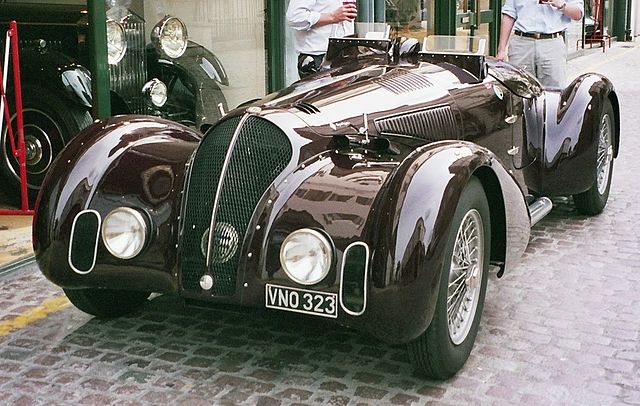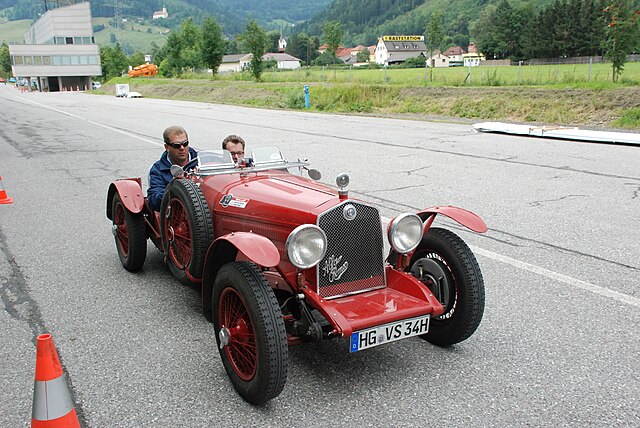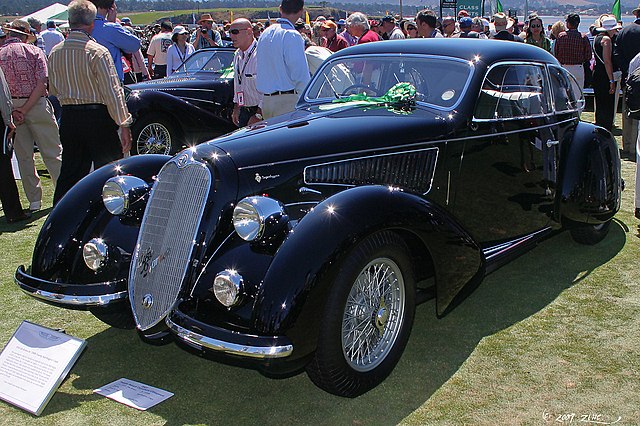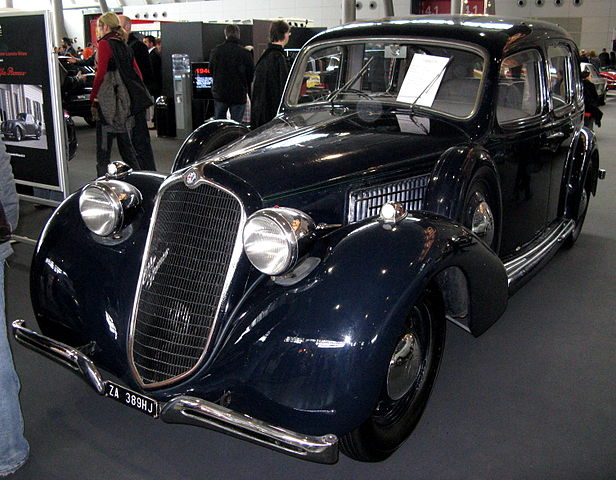
The Alfa Romeo 6C 2300 stands as a prominent figure in the lineage of Italian luxury and racing cars produced by Alfa Romeo from 1934 to 1938. Designed by the legendary engineer Vittorio Jano, the 6C 2300 emerged as a marvel of automotive engineering and aesthetics, combining innovative technology with breathtaking design.
This article explores the heritage, design, performance, models, and legacy of this classic car.
Development and Design

Genesis of the 6C 2300
The Alfa Romeo 6C 2300 was developed as part of the 6C series, which began in the early 1920s. The “6C” name refers to the six-cylinder engine configuration. The 2300 model was introduced in 1934, succeeding the 6C 1900. It was designed during a time when Alfa Romeo aimed to combine the performance of its racing vehicles with the comfort and style suited for road use.
Technical Innovations
Vittorio Jano, who was instrumental in establishing Alfa Romeo’s reputation through his designs, engineered the 2300 with significant advancements. The car featured a new 2.3-liter inline-six engine.
This engine was capable of delivering impressive power outputs, which varied by model type but generally offered around 68 to 95 horsepower. The engine’s design included features like light alloy heads and hemispherical combustion chambers, enhancing its efficiency and performance.
Aesthetic and Functional Design
The 6C 2300’s bodywork was often customized by various Italian coachbuilders such as Pinin Farina, Touring, and Castagna, leading to a range of body styles from sedans and convertibles to roadsters and coupes. The car’s design emphasized aerodynamics and elegance, with a focus on achieving a smooth, flowing line from front to rear, reducing drag and improving speed.
Performance and Handling

Engine Performance
The Alfa Romeo 6C 2300 was known for its robust and responsive engine. The power plant allowed for a top speed that could reach up to 145 km/h (90 mph), a notable figure for the 1930s. The car’s performance was not just about top speed; it also offered significant torque, aiding in superior handling and acceleration capabilities.
Innovations in Handling
Handling was enhanced by the innovative use of independent front suspension, a rarity at the time, which provided remarkable improvements in ride quality and cornering stability. The rear featured a conventional live axle setup, but with refinements that helped maintain balance and control at higher speeds.
Braking System
Safety in high-performance vehicles was paramount, and the 6C 2300 addressed this with its advanced braking system. It employed four-wheel drum brakes that were more effective than many contemporaries, providing the necessary stopping power for a high-speed vehicle.
Notable Models and Variants

The 6C 2300B
Introduced in 1935, the 6C 2300B was an evolution of the original model, featuring significant improvements such as a bigger engine and better handling. This variant was available in multiple sub-models, including the Pescara, which boasted up to 95 horsepower and had success in racing.
Special Editions
The 6C 2300 GT was a special edition that combined luxury with performance, catering to clients who demanded both comfort and speed. Its bespoke interiors and customized bodywork made it a favorite among the elite.
Racing Success
The 6C 2300’s adaptability to racing was proven by its variants like the 2300 MM, named after the famous Mille Miglia race. These cars were lighter and more powerful, tailored specifically for competition and achieving notable successes in various European races.
Legacy and Collectibility

Influence on Later Models
The technological and aesthetic foundations laid by the 6C 2300 influenced subsequent Alfa Romeo models, including the later 6C 2500. These innovations helped solidify Alfa Romeo’s reputation in both luxury and performance segments.
Collectibility and Value
Today, the Alfa Romeo 6C 2300 is highly prized among collectors due to its rarity, historical significance, and the pedigree of its design and performance. Well-preserved or expertly restored models fetch high prices in auctions and are often showcased in museums and classic car shows.
Cultural Impact
The 6C 2300 has left an indelible mark on automotive culture, celebrated for its blend of Italian craftsmanship, innovation, and style. It epitomizes the era of the 1930s when cars were transitioning from mere transportation to symbols of prestige and performance.
Conclusion
The Alfa Romeo 6C 2300 remains a testament to the era of innovation that defined the early 20th century automotive landscape. Its blend of design, performance, and luxury set standards that are still admired in the classic car community today. As a symbol of Italian automotive heritage, the 6C 2300 continues to captivate enthusiasts and collectors around the world, preserving its legacy as a true classic.
